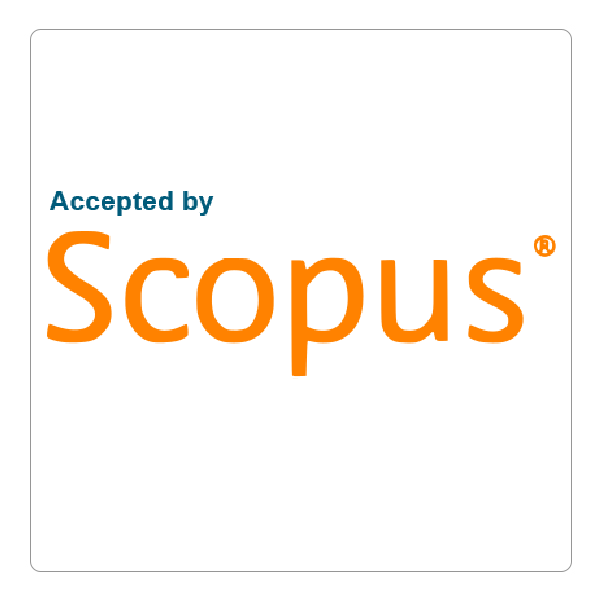How to Cite This Article
Zada, Ashna Kareem
(2018)
"The Geographical Names of Provinces in Iraq,"
Polytechnic Journal: Vol. 8:
Iss.
3, Article 9.
DOI: https://doi.org/10.25156/ptj.2018.8.2.13.275
Document Type
Original Article
Abstract
The names of places are old topics of interest because most of the names are taken from people’s stories, such stories may survive even after the original people have already disappeared or their nature is changed. Names have been given to important place, such as, passage paths, dangerous places, places for boundary symbols, rivers, provinces, districts, sub-districts, blocks, cultivated lands, mountains, valleys and holy places. A large part of the names of different places in the world are the go further back in history than the written documentation on these places. Special cases are those with places where the constructive culture has not been conserved and the written documentation is relatively recent. Place names can offer a way to reach further back to the past, to act as ruins of culture. Names are the part of the immaterial cultural heritage of the community in which they are used. Place names, their history and the stories related to the people who used to live there provide the places with a spiritual foundation, as well as an indigenous local identity. This study investigates the names of provinces in Iraq, where place names, the related cultural heritage, and place-name awareness and knowledge have been changed. The investigated place names represent a view on language that could be labeled as ‘geospatial information’. It is showed that there is a history behind all the names given to distinct places.
Publication Date
11-1-2018
References
1- Alhadeff, I. (2014). The-First-World-War-for-Oil-1914-1918. Smashwords.
2- Al-Suwaidi, I. (1962). History of Baghdad. Baghdad: As-Zaim Pr.
3- Anbar- ncciraq.org. (n.d.). Retrieved November 10, 2017, from https://www.ncciraq.org/images/infobygov/NCCI_Anbar_Governorate_Profile.pdf
4- Babil Governorate Profile - NCCI. (n.d.). Retrieved October 15, 2017 from https://www.ncciraq.org/images/infobygov/NCCI_Babil_Governorate_Profile.pdf
5- Basic information about Salah_ad_Din, (n.d). [16-Nov 2017] Retrieved from http://www.mapsguidesandmore.com/Iraq-Salah_ad_Din
6- Behind the name [Given Name SALAH AL-DIN], (n.d). [11-Nov 2017] Retrieved from https://www.behindthename.com/name/salah00al01din
7- Diyala Governorate Profile- NCCI. (n.d.). Retrieved November 13, 2017, from https://www.ncciraq.org/images/infobygov/NCCI_Diyala_Governorate_Profile.pdf
8- Dream Book, (n.d.), Meaning of name «Diala». [15-Nov-2017] Retrived from http://us.dreambook.in.ua/name/woman/diala/
9- Duhok City, (n.d). [20-Oct 2017] Retrieved from http://web.uod.ac/about/duhok-city/
10- Galletti,M.(2005).Kirkuk: The Pivot of Balance in Iraq Past and Present.Vol. 19, no. 2, Journal of Assyrain Academic Studies.
11- Governorate of Holy Kerbala, (n.d)., [3-Nov-2017] Retrived from http://investpromo.gov.iq/wp-content/uploads/2013/05/Karbala-province-En.pdf
12- Haldane, J. A. (2005). The insurrection in Mesopotamia, 1920. London: Imperial War Museum in association with the Battery Press.
13- History of Holy Najaf. [Imam Ali Network]. (2017). [6-Nov-2017]. Retrevied from http://www.imamali-a.com/?id=2433 https://www.ncciraq.org/images/infobygov/NCCI_Ninewa_Governorate_Profile.pdf
14- Investment Map for Iraq - PSDC, 2013. Retrieved October 10,2017 from https://www.ablcc.org/images/downloads/IM_P_final.pdf
15- Khalid, M. (2012). Interview on Names and meanings for Iraqi Cities. Interviewed by Ashna Zada. [Lecturer at University of Baghdad], 6 November 2017, 10:30.
16- Kurdistan Region. Ministry of Municipality &Tourism General Board of Tourism. (2015). Erbil Tourist Guide. General Directorate of Tourism. Erbil.
17- Major Cities, (n.d). [17-Nov 2017] Retrieved from http://www.uoanbar.edu.iq/English/CMS_Print.php?ID=7#Major
18- Marozzi, J. (2014). Baghdad city of peace, city of blood. London: Allen Lane.
19- Maysan governorate, (n.d). [16-Nov 2017] Retrieved from http://www.cinudn.com/en/article_show.php?id_show2=732
20- Ministry of Extra Regional Affairs. (2007). Report on the Administrative Changes in Kirkuk and the Disputed Regions.Kurdistan Regional Government:Erbil. Retrieved from http://perleman.org/files/articles/130508111135.pdf
21- Ministry of Interior. (2013). History of Sulaimanyah. Directorate of sulaymaniyah immigration. (10-Nov-2017). Retrieved from http://www.sulresidence.com/en/?page_id=108
22- Moberley, F.J. (1923). Official History of the Great War: The Campaign in Mesopotamia 1914-1918 (1 Vols.). London.
23- Muthanna Governorate Profile - NCCI. (n.d.). Retrieved November 9, 2017 from https://www.ncciraq.org/images/infobygov/NCCI_Muthanna_Governorate_Profile.pdf
24- Nadir, M., 2017. Interview on History Name of Mosul. Interviewed by Ashna Zada. [Lecturer at University],6 November 2017,5:35.
25- Ninewa Governorate Profile - NCCI. (n.d.). Retrived November 14, 2017 from
26- Nissen, H. J. (1986). The archaic texts from Uruk. World Archaeology, 17(3), 317- 334. doi:10.1080/00438243.1986.9979973 Sewell, L. (2017, March). A holy city with a tragic history. Spire hampton Hill's Parish Magazine, p.6.
27- Nuri,H.(n.d.).History of Kirkuk.[Kirkuk Book].15-NOV-2017 Retrieved from http://kirkuk99.blogspot.com/p/history-of-kirkuk.html
28- Patrick Lang, W. Jr., Alan, R., Andrea, V., Montgomery, M., Hashim, A., & Jeremy,S. (2006). Iraq Tribal Study – Al-Anbar Governorate: The Albu Fahd Tribe, The Albu Mahal Tribe and the Albu Issa Tribe. Department of Defense.
29- Pike, J., 2016. Global Security: Military. Basrah. [Accessed 10- Oct-2017]. Retrived from https://www.globalsecurity.org/military/world/iraq/basrah.htm
30- Platt, R., & Rossetto, A. (2017). A history of Baghdad. London: Collins.
31- Qadissiya Governorate Profile, 2015. NCCI Governorate Profile: NGO coordination Committee for Iraq.[15-Nov-2017] Retrieved from https://www.ncciraq.org/images/infobygov/NCCI_Qadissiya_Governorate_Profile.pdf
32- Rīshah, A. (n.d.). Dhī qār. Ḥalab: Muḥammad Ṣubḥī al-Labānīdī.
33- Rusty, N. (2012). Kurdistan Tourism Guide.Erbi: Kurdistan Region. Ministry of Municipality &Tourism General Board of Tourism. Erbil.
34- Salter,Lord, The Development of Iraq. London, 1955.
35- Schimmel.A.(1986). Kerbala and the Imam Husayn in Persian and Indo-Muslim literature (Vol.12). Books on Islam and Muslims \ Al-Islam.org (https://www.alislam.org).Muhammadi Trust of Great Britain and Northern Ireland.
36- Sulaymaniyah Governorate Assessment Report, (2006). UNHCR. [18 Nov 2017]. Retrieved from http://www.unhcr.org/459badd426.pdf
37- Thi-Qar Governorate Profile - NCCI. (n.d.). Retrieved September 6,2017 from https://www.ncciraq.org/images/infobygov/NCCI_ThiQar_Governorate_Profile.pdf
38- University of Karbala. [Wasit ... the center of the water and the camp of pilgrims Althagafi], (n.d.), [11 -Nov-2017]. Retrevied from http://tourism.uokerbala.edu.iq/en/index.php/the-joomla-project/133-2015-04-11-13- 08-35/727-wasit-the-center-of-the-water-and-the-camp-of-pilgrims-althagafi
39- Virga, Vincent., Grim, Ronald E., Billington, James H., (2007). Cartographia (1st ed.). Library of Congress. New York: Little, Brown and Company.
40- Waqidi, M. I., Al-Kufi, A. I., & Jabburi, Y. W. (1990). KitAb al-riddah; maa nubdhah min futu al-Iraq wa-dhikr Al-Muthana Ibn Haritha. Bayrut: Da al-Gharb al-Islami.











Follow us: